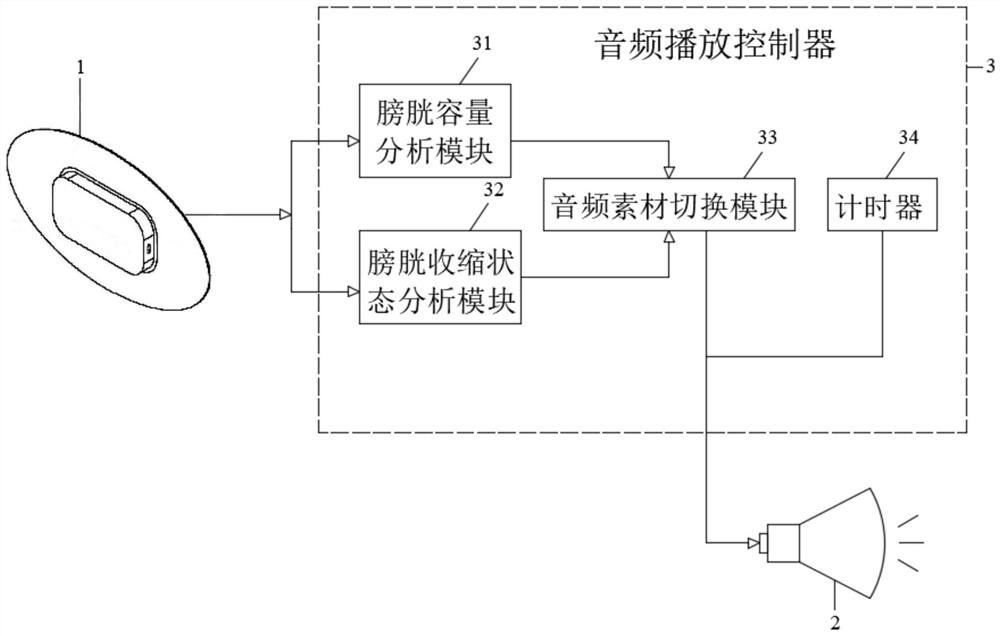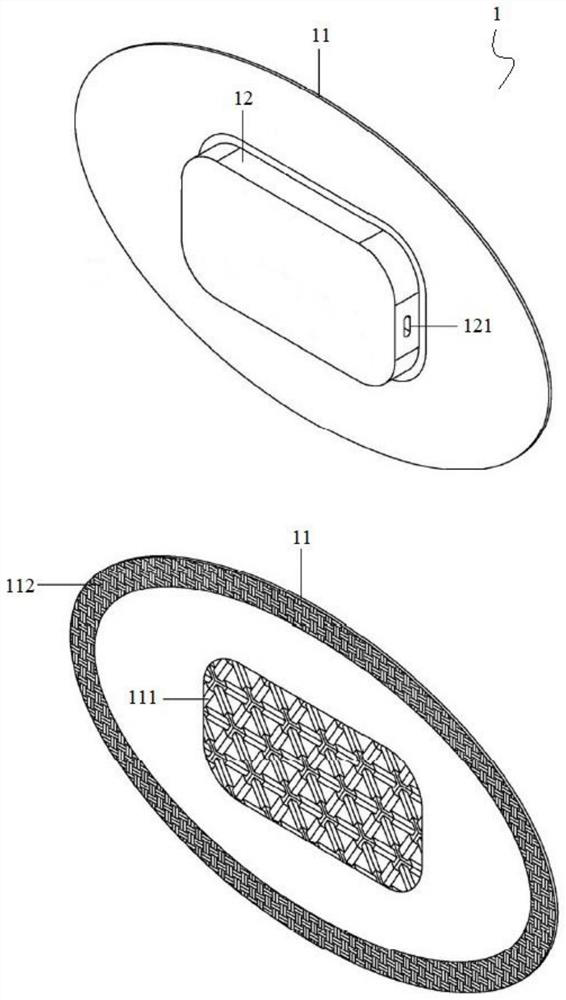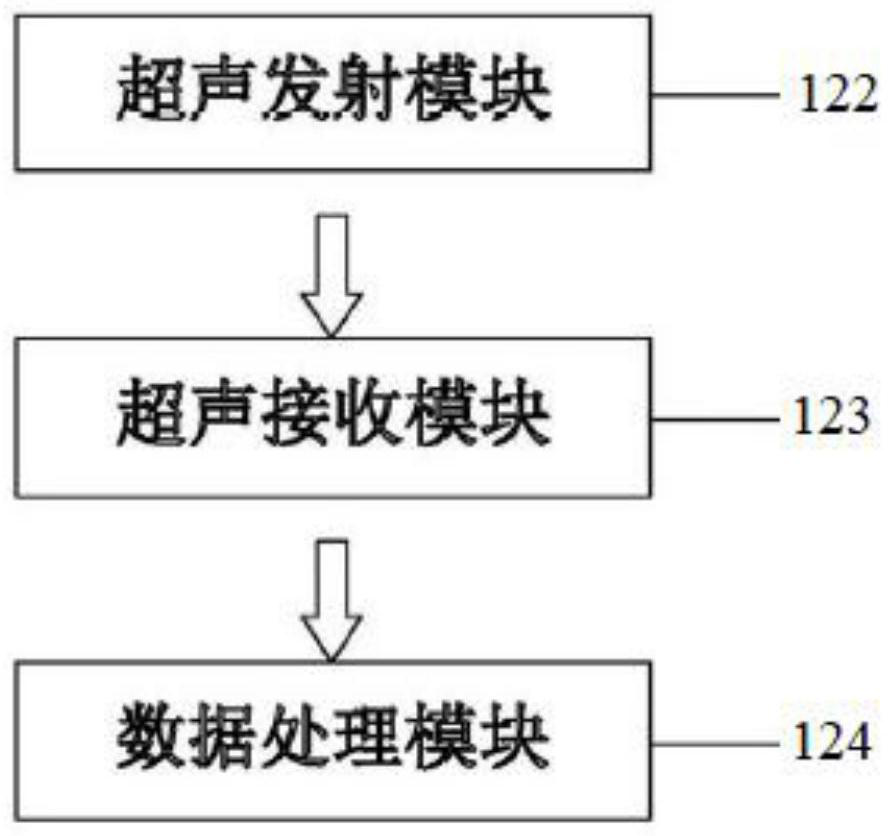Noninvasive bladder biofeedback training instrument
A technology of biofeedback and training equipment, applied in the field of medical equipment, can solve the problems of bladder biofeedback training equipment, etc., and achieve the effect of promoting the increase of bladder capacity and good training effect
- Summary
- Abstract
- Description
- Claims
- Application Information
AI Technical Summary
Problems solved by technology
Method used
Image
Examples
Embodiment 1
[0035] See figure 1 , figure 1 It is a structural schematic diagram of the non-invasive bladder biofeedback training instrument of the present invention. The non-invasive bladder biofeedback training instrument is provided with a bladder capacity measuring device 1 , a player 2 and an audio playback controller 3 . The bladder capacity measuring device 1 is used to detect the bladder capacity; the player 2 is used to store and play light music audio material and meditative breathing guidance voice material; the audio playback controller 3 is provided with a bladder capacity analysis module 31, bladder Contraction state analysis module 32 , audio material switching module 33 and timer 34 . The bladder capacity analysis module 31 is connected to the bladder capacity measuring device 1 for analyzing the variation of the bladder capacity value. The bladder contraction state analysis module 32 is also connected to the bladder capacity measuring device 1 for analyzing changes in t...
Embodiment 2
[0042] The present embodiment provides a method for measuring bladder contraction stability for non-therapeutic purposes, said method comprising the following steps: detecting individual bladder capacity by a bladder capacity measuring device, and then according to the formula: bladder contraction stability value=(b ultra-per The maximum capacity of several bladder capacities measured within n minutes - the minimum capacity of several bladder capacities measured within n minutes) / body weight, and the bladder contraction stability value is calculated every n minutes, through continuous monitoring of the bladder The comparison of contraction stability values obtains the variation of bladder contraction stability. By monitoring the normal voiding group and voiding dysfunction group, the relationship between voiding dysfunction and bladder contraction stability can be obtained, and the relationship between voiding dysfunction and bladder function can be further understood.
Embodiment 3
[0044] 1 Materials and methods
[0045] 1.1 General information
[0046] The observed cases were all children with primary nocturnal enuresis and reduced functional bladder capacity who were treated in the Children's Health Department of our hospital from May 2020 to August 2021, a total of 155 cases. They were randomly divided into two groups. The first treatment group consisted of 80 cases, 40 males and 40 females, aged 6 to 14 years, with an average age of (7.35±1.23) years; the second treatment group consisted of 75 cases, 38 males and 37 females, aged 5 to 14 years old, with an average age of (7.75±1.35) years old. The age, sex and other general information of the two groups of children were statistically processed, and there was no significant difference (P>0.05), which was comparable.
[0047] 1.2 Diagnostic criteria
[0048] According to the 2006 International Children's Continence Society (ICCS) diagnostic criteria for primary enuresis, it is also diagnosed as func...
PUM
 Login to View More
Login to View More Abstract
Description
Claims
Application Information
 Login to View More
Login to View More - R&D
- Intellectual Property
- Life Sciences
- Materials
- Tech Scout
- Unparalleled Data Quality
- Higher Quality Content
- 60% Fewer Hallucinations
Browse by: Latest US Patents, China's latest patents, Technical Efficacy Thesaurus, Application Domain, Technology Topic, Popular Technical Reports.
© 2025 PatSnap. All rights reserved.Legal|Privacy policy|Modern Slavery Act Transparency Statement|Sitemap|About US| Contact US: help@patsnap.com



